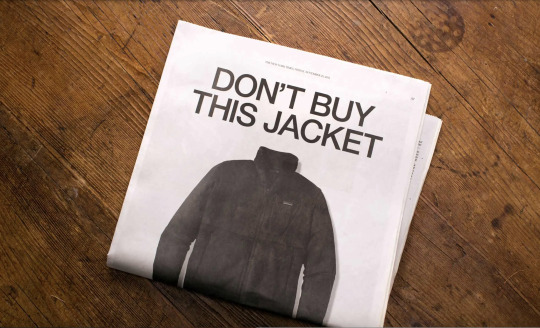Don't wanna be here? Send us removal request.
Text
Counterfeiters Issues facing luxury brands
In markets where brand status outweighs authenticity (as can be seen in some Asian markets), consumers might be more willing to purchase counterfeit products as long as they appear genuine. This is because luxury goods are often purchased for their ability to confer social status. Consumers often turn to counterfeits to obtain the status associated with luxury brands at a lower cost, which has increased the market for counterfeits. This is problematic for brands like Burberry, as it dilutes brand equity.
Louis Vuitton did a better job than Burberry in combating counterfeiters. Louis Vuitton uses advanced technologies such as RFID (Radio Frequency Identification) chips embedded in its products to ensure authenticity and track items through the supply chain. Such technological measures make it harder for counterfeiters to replicate LV products accurately and allow for easier verification of authenticity by consumers and retailers.
0 notes
Text
Good examples of educating the market: Patagonia


I summarized a timeline highlighting key events and methods through which Patagonia has educated the market about sustainable practices:
1988 - Early Environmental Grants Program
Patagonia starts its environmental grants program, funding grassroots organizations and raising awareness about environmental issues directly in stores and through product tags.
1993 - Introduction of Recycled Fleece
Patagonia pioneers the use of recycled plastic soda bottles to make fleece, educating consumers about recycling and the potential of upcycled materials in the process.
1996 - Switch to Organic Cotton
Patagonia shifts entirely to organic cotton, launching an educational campaign that includes a detailed booklet titled "Why Organic Cotton Matters", which was distributed in stores and mailed to customers.
2005 - Launch of Common Threads Initiative
This program focused on the lifecycle of products, promoting the 5 Rs: Reduce, Repair, Reuse, Recycle, and Reimagine. Patagonia educated customers on the importance of taking responsibility for the lifecycle of products through repair workshops, product take-back programs, and detailed care instructions.
2011 - “Don’t Buy This Jacket” Ad Campaign
In a bold move, Patagonia places an ad in The New York Times on Black Friday telling customers not to buy their jacket unless necessary, highlighting the environmental costs of overconsumption.
2013 - Worn Wear Program
Patagonia launches Worn Wear, an initiative to encourage people to buy used gear. Accompanied by roadshows, repair events, and online tutorials, this program educates consumers about the value of keeping gear in use for longer and the practicalities of garment repair.
2017 - Patagonia Provisions
Expanding beyond clothing, Patagonia starts offering sustainable food products, using this new line to educate about regenerative practices in agriculture and the food industry.
2019 - ReCrafted Collection
Patagonia launches the ReCrafted collection made from scraps of fabric waste. Through this initiative, they host workshops and create marketing materials that explain the process of upcycling and the environmental benefits of utilizing fabric scraps.
1 note
·
View note
Text
2 key takeaways from the case of Concha y Toro:
The perception of a wine's country of origin plays a critical role in consumer choice. Concha y Toro and other producers are aware that the national image can significantly influence marketing success. Efforts to build a positive country image through advertising and media could enhance brand perception and sales.
Brands that utilize similar strategies:
Burberry (United Kingdom): This iconic British luxury fashion brand leverages the UK’s image of classic style, sophistication, and quality. Burberry’s marketing often incorporates British cultural symbols and the country's reputed fashion sense to appeal to consumers worldwide.
IKEA (Sweden): IKEA’s brand is heavily influenced by Swedish design principles - functional, minimalist, and sustainable. The company uses Sweden’s reputation for practicality and environmental consciousness to appeal to a global audience looking for affordable yet stylish home solutions.
2. Concha y Toro considered both "bottom-up" and "top-down" strategies for brand extension. The former involves moving from lower-priced to higher-priced market segments to avoid competition at the lower end, while the latter uses the prestige of high-end products to bolster the brand’s presence in basic segments.
Brand that utilizes similar strategies:
H&M and COS (Retail Fashion):
Bottom-Up: H&M is known for fast fashion at lower price points. It introduced COS (Collection of Style) to target a more upscale market segment, offering higher quality and prices but still keeping within the accessible range, moving the brand perception upward.
Top-Down: The association with a stylish, higher-end brand like COS enhances the overall image of H&M Group, lending it a more fashionable and premium aura.
0 notes
Text
How Disney's streaming service contributes to the broader Disney customer journey:
Disney's streaming service, notably Disney+, plays a strategic and expanding role in its customer journey map, extending the brand's interaction with its audience beyond the parks, merchandise, and traditional media outlets. By integrating Disney+ into its portfolio, Disney has effectively leveraged digital transformation to enhance and diversify its touchpoints with consumers. Here’s how Disney+ contributes to the broader Disney customer journey:
Brand Introduction: Disney+ serves as an introduction to the Disney brand for new audiences. Families with young children or international viewers who may not have easy access to Disney parks can experience the magic of Disney through its streaming content, potentially sparking interest in visiting the parks or engaging with other aspects of the brand.
Extending the Disney Experience: For many, a visit to a Disney park is a significant event that may happen infrequently. Disney+ helps extend the magic of Disney parks and movies into everyday life, ensuring that the emotional connection with the brand is maintained year-round.
Synergy with Other Services: Disney+ can be bundled with other Disney-owned streaming services like Hulu and ESPN+, offering a more comprehensive entertainment package that caters to the entire family's interests. This bundling strategy increases the value proposition for consumers and deepens the customer's relationship with the Disney ecosystem.
1 note
·
View note